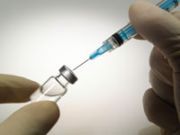Article
Basal Insulin Therapy with Glargine Biosimilar Meets Non-Inferiority Criteria
Author(s):
Study results presented at ADA 2014 show Eli Lilly's investigational long-acting basal insulin analog to have similar clinical efficacy in reducing HbA1c levels as a currently approved injectable insulin glargine product, with a comparable side effect profile.

During a session Saturday at the American Diabetes Association’s 74th Scientific Sessions, held June 13-17, 2014, in San Francisco, CA, Julio Rosenstock, MD, of the Dallas Diabetes & Endocrine Center in Texas, presented results exploring whether LY2963016 (LY IGlar), a long-acting basal insulin analog developed from a collaboration between Eli Lilly & Company and Boehringer Ingelheim that is identical in primary amino acid sequence to originator insulin glargine (IGlar, marketed as Lantus) from Sanofi-Aventis, was found to be non-inferior to IGlar in safety and efficacy.
“It is important to realize that insulin analogs are biological products manufactured using sophisticated recombinant technology and cannot be made identical to the original, not like the generics, which can be generated as identical chemical products. But biologics can be made similar,” said Rosenstock.
“In the US, the Biologics Price Competition and Innovation Act was enacted as part of the Affordable Care Act, establishing an abbreviated pathway for FDA licensure of biological products demonstrated to be biosimilar to an FDA-licensed reference drug,” he said.
Rosenstock differentiated application of the term “biosimilar” to LY IGlar within the US versus the rest of world, noting that because IGlar was approved as a drug by the US FDA through an NDA pathway (505), LY is required to go through a variant of NDA pathway 505 that also includes preclinical and clinical trials. “For this reason, LY in the US will not be designated by FDA as a biosimilar, although in most other geographies, it can be referred to as a biosimilar,” he said.
Rosenstock presented evidence from ELEMENT-2, a Phase 3, randomized, double-blind study comparing the safety and efficacy of LY IGlar to that of IGlar. Participants with type 2 diabetes (T2DM) who had been inadequately controlled on two or more oral antihyperglycemic medications (OAMs) were enrolled in the trial, and received either LY IGlar or IGlar, with a total of 756 patients completing the study. Insulin-naïve patients beginning the study had HbA1c levels ≥7.0% to ≤11.0%; those previously on IGlar had HbA1c ≤11.0%.
The primary objectiveof the trial was to evaluate at 24 weeks whether LY IGlar was non-inferior to currently-marketed IGlar in reducing average blood sugar levels (HbA1c) from baseline. The designated criteria establishing non-inferiority was set to <0.4%. In a secondary efficacy objective, anti-insulin glargine antibodies were measured to establish an immunogenicity profile for LY IGlar.
Both drugs delivered statistically significant (p<.001) intra-group reductions of HbA1c of approximately 1.3%, leading to endpoints for LY IGlar and IGlar of 7.04% and 6.99%, respectively.The similarity in changes of HbA1c levels from baseline demonstrated non-inferiority of the biosimilar product by meeting the criteria for equivalence in clinical efficacy. Adverse event frequencies were also similar between the 2 insulin analogs, with LY IGlar at 52% and IGlar at 48%; p=0.31. Overall, there were no treatment differences in secondary outcomes of efficacy or safety in the total population of patients or between the insulin-naïve and IGlar subgroups.
Rosenstock concluded his talk by saying, “LY, compared to the originator insulin glargine, demonstrated similar glucose effects, insulin dosages, changes in body weight, hypoglycemia incidences, adverse event profiles, allergic injection reactions, and antibody formation. In conclusion, LY, when compared with the originator insulin glargine in combination with oral agents, provided as good an efficacy and safety profile with no clinically meaningful difference in patients with type 2 diabetes.”
The study was sponsored by Eli Lilly & Company.




